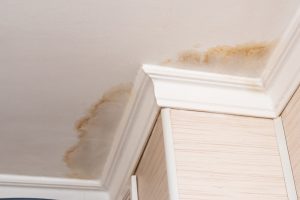What are your beliefs on How to Repair and Prevent Bathroom Water Damage??

Water damage commonly happens in the washroom due to the water made use of everyday. Sometimes, the damages could be a little mold from the shower. Various other times, it's huge damages on your floor. Whatever it is, it is constantly good to recognize the cause and also prevent it prior to it happens.
This overview will undergo some of the typical causes of water damage in the shower room. We will also analyze what you can do to stop these causes from damaging your washroom. Let's dive in.
These are the usual reasons you would have water damage in your bathrooms as well as exactly how you can spot them:
Excess Wetness
It's trendy to have that long shower as well as dash water while you hem and haw and act like you're executing, but in some cases these acts can cause water damage to your restroom.
Spraying water around can create water to go to corners and also create molds. View exactly how you spread out excess moisture around, and when you do it, clean it up to avoid damages.
Splits in your wall tiles
Restroom wall ceramic tiles have actually been particularly made for that objective. They protect the wall from moisture from people taking showers. Nevertheless, they are not unbreakable.
In some cases, your shower room wall surface ceramic tiles split and also permit some dampness to permeate right into the wall surface. This can potentially destroy the wall if you don't take any type of activity. If you observe a split on your wall surface floor tiles, repair it immediately. Don't wait until it destroys your wall.
Overflowing toilets and sinks
As humans, sometimes we make mistakes that could cause some water damage in the bathroom. As an example, leaving your sink faucet on might trigger overflowing and damage to other parts of the washroom with dampness.
Likewise, a malfunctioning bathroom could cause overruning. As an example, a damaged toilet handle or various other parts of the tank. When this occurs, it might damage the flooring.
As quickly as you observe an overflowing sink or toilet, call a plumber to aid take care of it right away.
Burst or Dripping Pipes
There are numerous pipelines lugging water to different parts of your bathroom. Some pipelines take water to the bathroom, the sink, the taps, the shower, and also lots of other places. They crisscross the tiny area of the bathroom.
Once in a while, these pipelines might get corroded as well as burst. Various other times, human action can trigger them to leak. When this takes place, you'll discover water in the corners of your washroom or on the wall.
To spot this, keep an eye out for bubbling wall surfaces, molds, or mildew. Call an expert emergency plumbing professional to repair this when it happens.
Roof covering Leaks
Occasionally, the issue of water damage to the bathroom could not come from the washroom. For instance, a roof leakage could trigger damage to the shower room ceiling. You can spot the damages done by looking at the water discolorations on the ceiling.
If you discover water stains on your ceiling, examine the roofing system to see if it's harmed. Then, call a specialist to help address the issue.
Verdict
Water damage to your bathroom can be aggravating. However, you can manage it if you avoid several of the causes stated in this guide. Call an expert emergency plumbing if you observe any kind of severe damage.
How to Prevent Water Damage in Your Bathroom?
Water damage repair is an expensive, meticulous, and lengthy process. Unfortunately, bathrooms are the most susceptible rooms to water damage due to toilets, showers, and sinks. Pipes and fixtures wear out over time and are not immune to damage. But all is not lost, as there are ways to prevent water damage from occurring in your bathroom.
Check Your Plumbing
Nothing lasts forever, especially pipes, which can rust and begin leaking over time. You should periodically conduct pipe inspections and pay attention for any musty smells or water stains that may indicate you need water damage repair. Here are some things to check:
Frequently test valves for your toilet, shower, and sink to ensure they are properly working. Check faucet supply lines hidden under vanities and replace when needed. Replace cracked or deteriorating caulking along sinks, tubs, and showers. If you notice a clog in your sink, call in a professional. Since you can’t check the pipes in the wall, keep an eye out for stains, drywall bubbling, musty smells, and excess moisture; if the bathroom is on a second level, check the ceiling of the room directly below for these signs. Don’t Overwork Your Toilet
One of the most common reasons bathrooms need water damage repair is due to overflowing toilets. Save yourself the hassle of cleanup by being mindful and not pushing your toilet to extreme limits. If you have young children, it is especially important to keep an eye on them when they are in the bathroom and to teach them how to avoid clogging the toilet. Here are some more tips to help prevent your toilet from overflowing:
If you have a septic tank, only use septic-safe toilet paper Do not flush anything down the toilet besides toilet paper; items like diapers and sanitary napkins will clog the piping Pay attention to your toilet’s water level: If it’s low, it could mean it is partially clogged or that there is a crack in the toilet bowl https://www.alure.com/home-improvements-blog/resources/how-to-prevent-water-damage-in-your-bathroom

I ran across that blog entry about How to Repair and Prevent Bathroom Water Damage? while doing a search on the internet. Sharing is nice. Who knows, you may very well be doing someone a favor. I praise you for your time. Visit again soon.
Schedule A Service Call